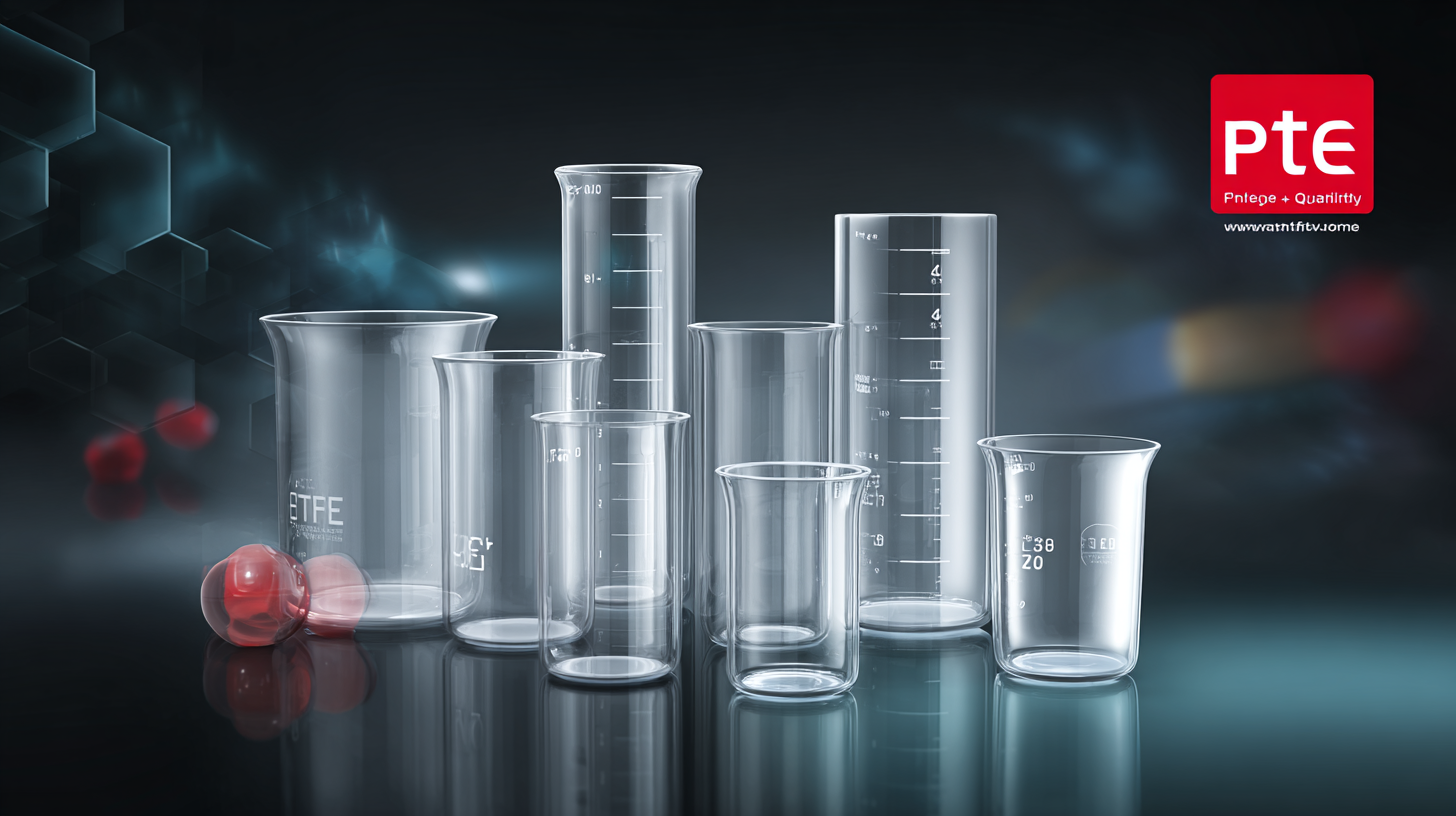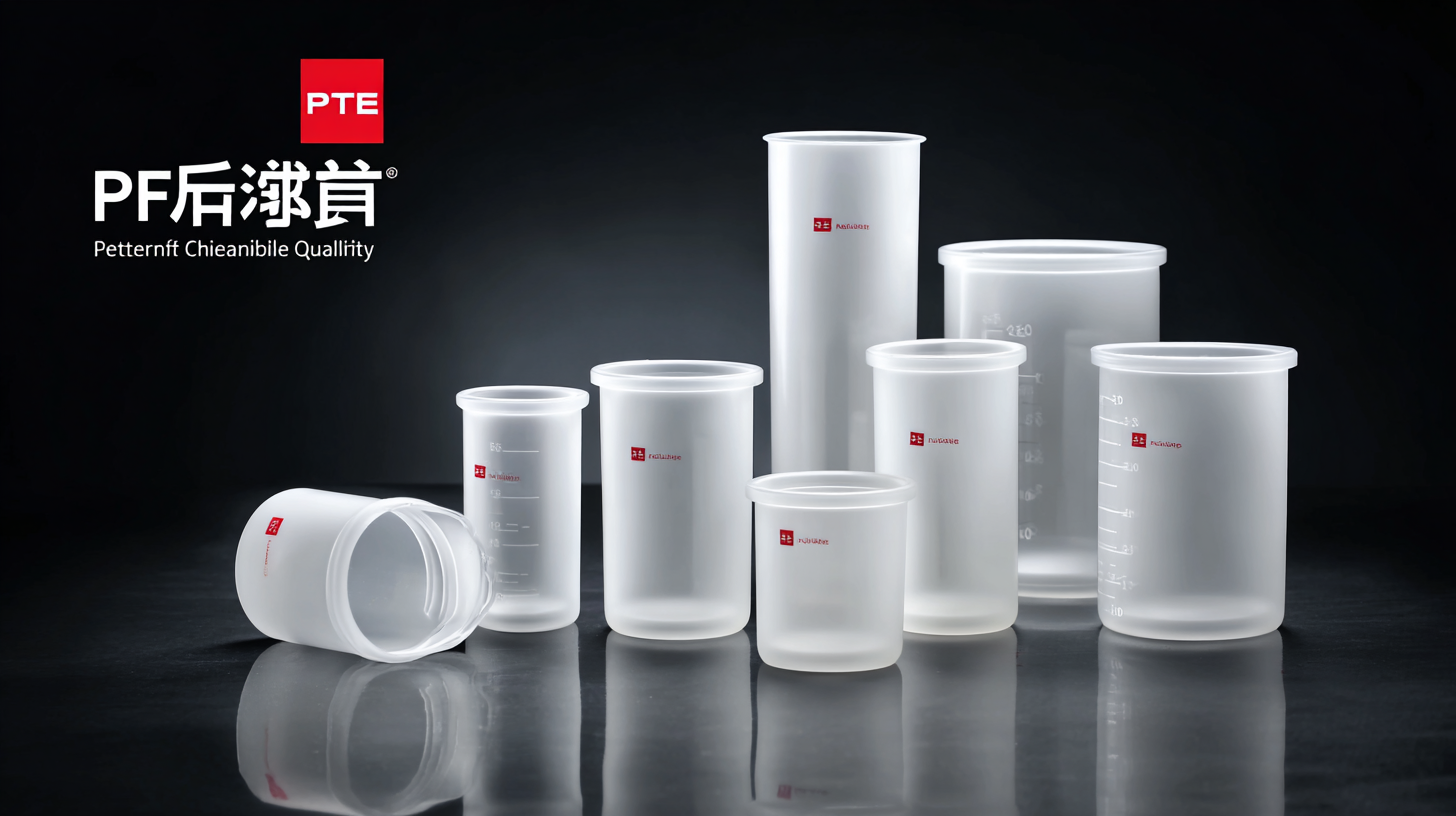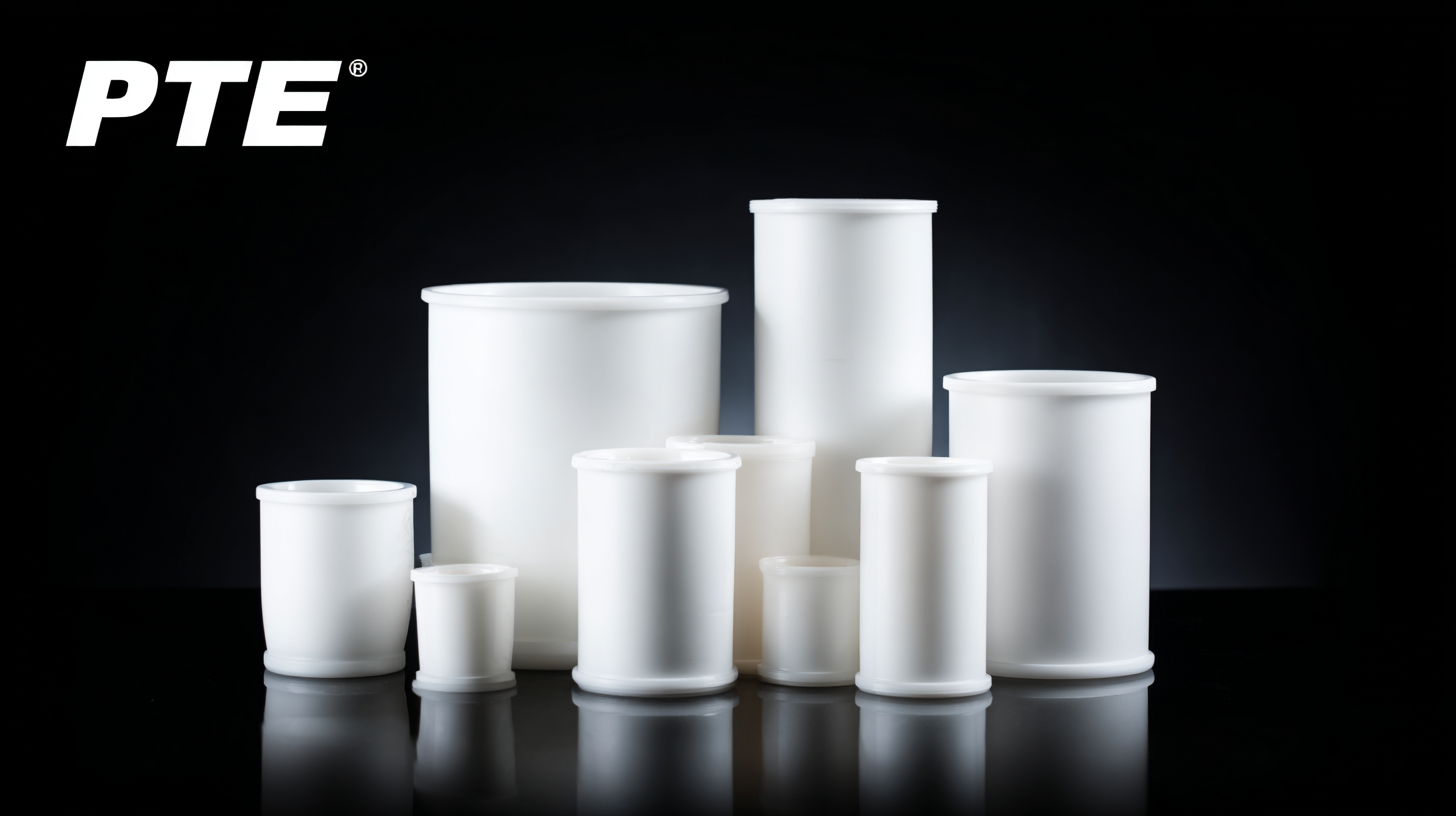In the world of laboratory equipment, the demand for high-quality materials is paramount, particularly when it comes to PTFE beakers. These versatile containers are essential for various applications, from chemical analysis to sample preparation, due to their exceptional resistance to heat, corrosion, and chemicals. As global buyers look for reliable sources of PTFE beakers, Chinese manufacturers are stepping up to meet this demand, offering outstanding alternatives that boast both performance and affordability. In this blog, we will explore the leading Chinese manufacturers specializing in exceptional PTFE beakers, highlighting their unique manufacturing processes, product quality, and commitment to sustainability.

Join us as we uncover the advantages of sourcing PTFE beakers from these top-tier suppliers, ensuring you make informed decisions that enhance your laboratory's efficiency and reliability.
When it comes to precision applications in laboratories and industrial settings, the choice of materials can significantly impact results. PTFE (Polytetrafluoroethylene) beakers have become a preferred choice due to their exceptional chemical resistance and thermal stability. According to a report by Research and Markets, the global PTFE products market is expected to reach $7.8 billion by 2025, indicating a growing demand for reliable materials in various applications, including pharmaceuticals, chemicals, and food processing.

One of the standout features of PTFE beakers is their ability to withstand high temperatures and corrosive substances, making them ideal for applications that require stringent hygiene and stability conditions. They can typically handle temperatures ranging from -200 to 260 degrees Celsius. Furthermore, the low friction coefficient of PTFE ensures that these beakers are easy to clean and maintain, further enhancing their appeal. A study published in the Journal of Industrial and Engineering Chemistry highlights that using high-quality PTFE labware can improve operational efficiency by minimizing contamination risks and maximizing temperature control during experiments.
Moreover, leading manufacturers in China are producing PTFE beakers that meet international quality standards, ensuring that global buyers can benefit from both high performance and cost-effectiveness. Their products are tailored for precision applications, providing features like graduated markings for accuracy and compatibility with various laboratory instruments, thus reinforcing PTFE beakers' position as an essential asset in precision-oriented environments.
PTFE beakers have gained immense popularity in various industries due to their superior chemical resistance and thermal stability. The manufacturing process of high-quality PTFE beakers involves several critical stages, starting from the selection of raw materials. Leading Chinese manufacturers utilize virgin PTFE granules, ensuring that the products meet the high standards required for scientific and industrial applications. According to a report by Grand View Research, the global demand for PTFE products is expected to grow at a compound annual growth rate (CAGR) of 5.3% from 2020 to 2027, highlighting the increasing relevance of such products in laboratories and manufacturing setups worldwide.
The production process typically includes processes such as molding, sintering, and finishing. Sintering is particularly crucial as it determines the density and mechanical strength of the beakers. Advanced techniques such as rotational molding are employed to create beakers with uniform walls and smooth surfaces, which are essential for accurate measurement and ease of cleaning. The use of automated systems in manufacturing further enhances quality control, ensuring that each beaker is consistent and free from defects. Notably, a study by Mordor Intelligence indicates that the global PTFE market is projected to reach $2.8 billion by 2025, driven largely by the expanding use of PTFE in laboratories and industrial applications. This underlines the importance of investing in high-quality manufacturing processes for PTFE beakers to cater to the needs of global buyers.
| Specification | Dimension (ml) | Material Grade | Temperature Resistance (°C) | Certifications |
|---|---|---|---|---|
| Standard PTFE Beaker | 50 | Virgin PTFE | −200 to 260 | ISO 9001, RoHS |
| Graduated PTFE Beaker | 100 | Reinforced PTFE | −200 to 260 | ISO 14001, CE |
| High Purity PTFE Beaker | 250 | High Purity Grade | −200 to 260 | FDA, USP Class VI |
| Mini PTFE Beaker | 10 | Virgin PTFE | −200 to 260 | ISO 9001 |
| Large Capacity PTFE Beaker | 1000 | Reinforced PTFE | −200 to 260 | RoHS, CE |
When it comes to laboratory applications, choosing the right type of beaker is crucial. PTFE beakers stand out for their unique properties compared to traditional glass or plastic alternatives. PTFE, or polytetrafluoroethylene, is known for its exceptional chemical resistance, making it ideal for handling corrosive substances that would otherwise degrade glass or plastic materials. Unlike glass, which can shatter and create safety hazards, and plastic, which may leach harmful chemicals, PTFE offers a robust and safe solution for various applications.

Moreover, PTFE beakers are lightweight and non-stick, providing ease of cleaning and reducing the risk of contamination. This characteristic is particularly advantageous when working in sensitive environments where maintaining purity is essential. In contrast, while glass offers an aesthetic appeal and is inert, its weight and fragility make it less practical for dynamic or rigorous laboratory settings. Similarly, plastic beakers may warp under high temperatures or certain chemical exposures. Therefore, when assessing performance, durability, and overall reliability, PTFE beakers emerge as a superior choice for modern laboratories navigating increasingly complex experimental requirements.
When choosing the right PTFE beaker for laboratory needs, several key factors should be considered. Polytetrafluoroethylene (PTFE) is known for its exceptional chemical resistance and high thermal stability, making it ideal for applications in demanding environments like aerospace and automotive industries. Recent advancements have highlighted the importance of optimizing PTFE's performance in certain applications, revealing that enhancing its compatibilization and wear resistance remains a critical challenge for manufacturers.
According to industry reports, the market for PTFE-based products is increasingly gaining traction, particularly as researchers are working to commercialize PTFE-based electrodes for efficient energy applications. This surge in research and development points to a stronger demand for high-quality PTFE beakers, which are pivotal in conducting reliable and precise experiments. Global buyers seeking PTFE beakers should prioritize manufacturers that invest in innovative technologies and quality assurance processes, as this directly impacts the reliability and effectiveness of laboratory results.
When it comes to maintaining the exceptional quality of PTFE (Polytetrafluoroethylene) beakers, proper care is essential. These beakers are renowned for their chemical resistance and non-stick properties, making them invaluable in various laboratory settings. To ensure their longevity and performance, start by cleaning the beakers immediately after use. Rinse them with warm water and a mild detergent to prevent residue build-up, which can compromise their integrity.
Additionally, avoid using abrasive materials or harsh chemicals that could scratch or degrade the beaker's surface. Instead, use soft sponges or cloths for cleaning. For stubborn stains, a solution of baking soda and water can effectively cleanse without damaging the beaker. After washing, ensure thorough drying to prevent moisture accumulation, which could lead to contamination. By following these simple steps for care and maintenance, you can extend the lifespan of your PTFE beakers, ensuring they remain an essential tool in your laboratory for years to come.
